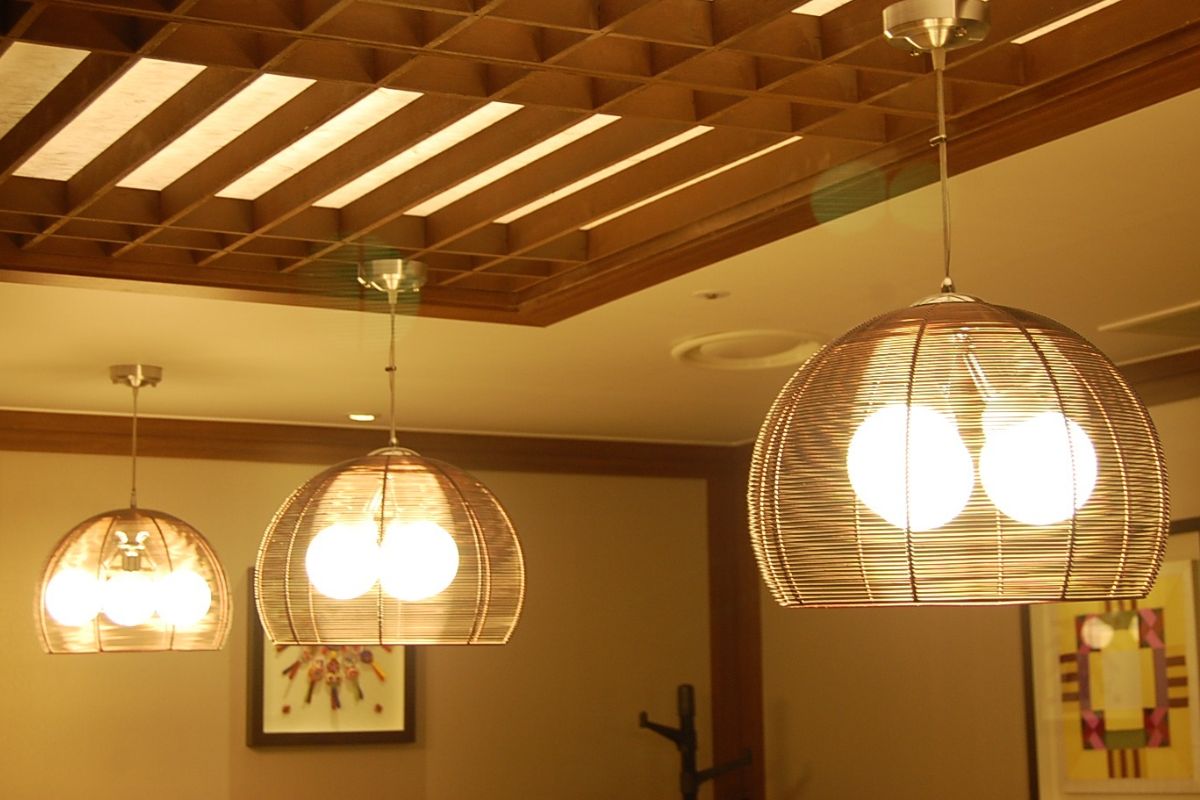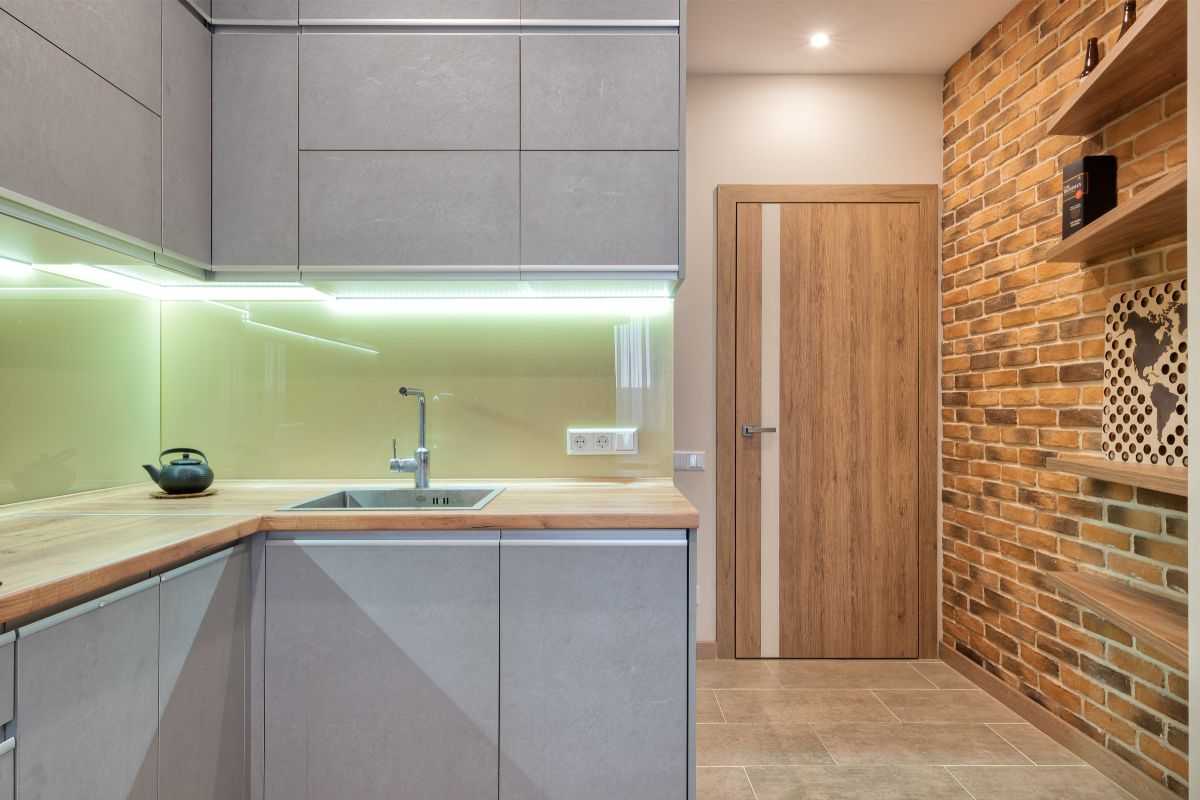Not so long ago, The National Electric Code didn’t require builders to install ceiling lights and all the wiring that facilitates their operation in new builds, so there are a number of slightly older builds across the US with living rooms that do not have overheads.

It actually makes for a very neat and airy aesthetic, but homeowners are then left with the rather puzzling challenge of illuminating these living spaces so they can be used after dark.It’s a bit of a head-scratcher, I know, but don’t fret, as there are plenty of ways in which you can introduce some light into your dark living space to create almost any kind of mood, all while adhering to your established interior aesthetic.
What Sort Of Lighting Is Best For Living Rooms Without Overhead Lighting?
While it might be quicker to simply settle on one kind of light, buy a bunch of them, and set them evenly about the room, this isn’t going to look good from an aesthetical standpoint, nor is it going to provide a diverse enough glow to create depth or a nuanced atmosphere.In any living room, the best approach is always going to be to combine a bunch of different lights. If you have a lot of free surfaces, table lamps are a great place to start, and don’t feel you have to purchase matching ones either.
As long as they complement one another and the vibe of the room in general, you’re all good!You’ll want to bring in at least a couple of floor lamps as well, and again, don’t feel you have to purchase duplicates. Mix it up a bit to add some variety to your room.
Sconce or wall lights are a must, too! While the lamps around your room are going to provide tons of ambiance, these lights can add some functional light to the most occupied or traveled areas of the room or accentuate key features of the space.
How Do You Create Diverse Lighting In A Living Room With No Overhead Lights?

Once you’ve decided on a wealth of discrete fixtures, you’ll need to focus on diversifying the types of light said features emit. Broadly speaking, there are three lighting categories:
- Ambient
- Task
- Accent
The trick to creating a diverse lighting profile in your overhead-less living room is layering these different types of light (more on that in a moment), but first, let’s define each category.
Ambient Lighting
Ambient lighting is all about setting the mood. It’s not great for reading or performing any complex tasks, but boy does it make a space pleasant to be in. This is the kind of light you’ll relax in watching TV, playing games, or chatting with friends.The defining features of ambient lighting are its softness and directional ambiguity. It should not be focused, rather, it should simply provide a wide spread of moody light.
Task Lighting
Task lighting stands in opposition to ambient lighting. Rather than spread, it is focused, and rather than soft, it is quite stark, giving you flawless visuals for tasks that require concentration and accuracy.If, for example, you like to read books or the newspaper in your living room, you’ll need at least one fixture dedicated to task lighting.
Accent Lighting
Accent lighting is completely cosmetic in nature and works hand in hand with ambient lighting to establish a certain tone or atmosphere, yet it has a more directional character in common with task lighting.It serves to literally shine a light on points of interest around the room. Whether you want to emphasize interesting architectural features, illuminate a work of art on the wall, or even highlight an entire area of the room, accent light is the way to do it.
Layering Light In Living Rooms With No Overheads
Ambient Lighting First
As a general rule of thumb, it’s best to start your light layering with a base of ambient light. This will form the backdrop on which you will add detail later on. To kick things off, use a mixture of lamps and wall lights.Even though our brains love seeking out and creating patterns, fight the urge to create sequences of ambient lighting.
By definition, ambient lighting is a little, shall we say… higgledy-piggledy. Adding too much structure to something unstructured by design will only limit its impact.Placing table lights at different heights is a great way to add some satisfying asymmetry to the room. For example, I have a lamp on a side table, and another slightly higher up on the top of a piano.
I also have yet another table lamp on a music cabinet that sits between the first two in terms of height.And, just because you’re not aiming for symmetry with ambient lighting, doesn’t mean you want imbalance across your room.
While the placement of each lamp is unrelated, you want roughly the same amount of light spread throughout the space.
Task Lighting Second
With the luminous backdrop established, you can bring in some focused task lighting wherever you need it.
If you have a desk in your living room, then that’s where your task lighting should go, or if you like to read on the couch, a corner floor lamp overlooking your seating area will be just the ticket.Wall fixtures are also great providers of task lighting, especially if you’d prefer a wider spread to increase this practical area of your living room, so more people can use it simultaneously.
Accent Lighting Last
Now’s the time to fine-tune the atmosphere of your living room with some lovely accent lighting.
In some instances, table lamps can provide both ambient and accent lighting, if you place them under an alcove, for example, but for the most part, this is where sconces or torchiere-style lights come into play.
Use them to highlight architectural embellishments and works of art, adding a museum-esque element to a relaxed atmosphere.
Mirrors To Finish
Mirrors don’t only make rooms feel larger but will reflect light and make them seem brighter, making them the perfect finishing touch to a living room with no overhead lights.
Final Thoughts: Let There Be Light
There’s really no reason to worry about the absence of overhead lighting in your living room since, with a bit of creativity, you can curate a wonderfully diverse luminous profile to suit any mood or task. Granted, operating all these different light fixtures can be taxing, but by implementing the right smart technology in your home, you’ll be able to control everything remotely from your phone!



